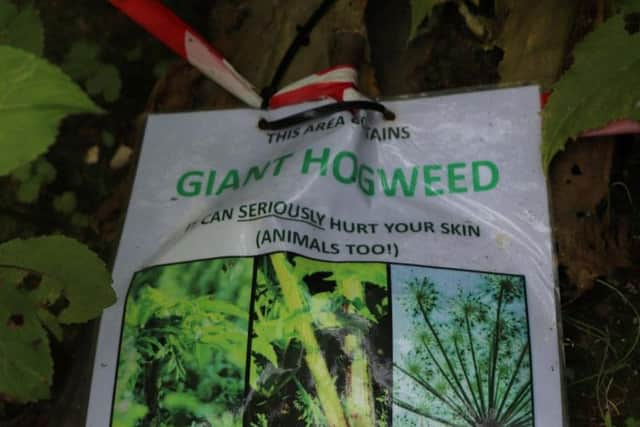Parents warned as 'UK's most dangerous plant' Giant Hogweed spotted near Leeds primary schools
This article contains affiliate links. We may earn a small commission on items purchased through this article, but that does not affect our editorial judgement.


Heracleum mantegazzianum, or Giant Hogweed, can reach over 10ft in height and poses a 'serious risk' to people who are unaware of its potential for harm, according to the Royal Horticultural Society.
-> Warning as toxic giant hogweed flourishes in LeedsToxic sap from the weed, which grows near canals and rivers, can increase the sensitivity of the skin to sunlight, often leading to burns - and can cause temporary or even permanent blindness if the sap gets into the eye.


It is also particularly dangerous for dogs.
Advertisement
Hide AdAdvertisement
Hide AdIncredible Edible Kirkstall executive director Paul Long posted about sightings of Giant Hogweed on the banks of the River Aire on the Yorkshire Evening Post's Facebook page.
He wrote: "Giant Hogweed found just off Kirkstall Road near the river - stay safe and keep dogs away.
"If you do come in contact with the sap cover it asap from the sun light and seek medical attention."


The Giant Hogweed has been spotted at Kirkstall Goit, near to the Ready Steady Store, close to Beecroft and Sacred Heart primary schools, with patches spreading down towards Asda.
Advertisement
Hide AdAdvertisement
Hide AdPaul said: "If you walked out of Sacred Heart Primary School, crossed over the road into the tree line you would see it near the river close to the steps."
Giant Hogweed has been described as 'the most dangerous plant in Britain' by the Mersey Basin Rivers Trust.
Warning signs have been put up around some of the plants and they are in the process of being removed.
-> Parents warned after 'dangerous' giant hogweed plant is reported in Leeds following heatwaveGiant Hogweed facts
It is a close relative to cow parsley.
Advertisement
Hide AdAdvertisement
Hide AdIt has thick, bristly, reddish-purple stems and can reach over 3m (10ft) in height.
The flowers are white in a flat-topped clusters that can be as large as 60cm (2ft) across.
Giant Hogweed was originally brought to Britain from Central Asia in 1893.
It commonly grows on riverbanks and wasteland.
Its leaves, stems, roots, flowers and seeds contain toxic components which can be transferred by contact and make exposed skin extremely sensitive to sunlight.
What to do if you come into contact with it
Advertisement
Hide AdAdvertisement
Hide AdAfter coming into contact with the plant, the burns can last for several months and the skin can remain sensitive to light for many years.
The NHS advises: “If the sap of the giant hogweed comes into contact with your skin, it can cause severe, painful burns and make your skin sensitive to strong sunlight.
“If you touch a giant hogweed, cover the affected area, and wash it with soap and water.
“The blisters heal very slowly and can develop into phytophotodermatitis, a type of skin rash which flares up in sunlight. If you feel unwell after contact with giant hogweed, speak to your doctor.”